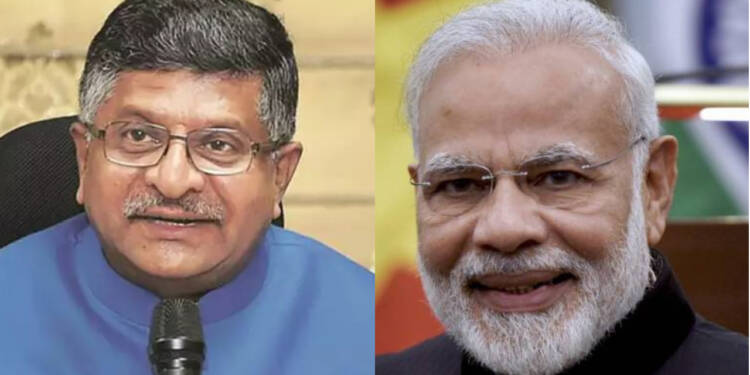After the roaring success of PM Modi’s Production Linked Incentive (PLI) scheme in the mobile phones manufacturing and pharmaceutical sector, the Indian government will very soon announce the same for laptop and tablet manufacturing, said the Electronics and Information Technology Minister, Ravi Shankar Prasad.
“Now, my focus is that India emerges as a big centre for manufacturing of other important electronic gadgets, which have become integral to our day-to-day existence, that is from laptops to tablets and servers,” said Ravi Shankar Prasad.
Prasad also argued that the domestic manufacturing of electronic equipment increased exponentially since PM Modi came to power in 2014. India has become the world’s second-largest manufacturer of mobile phones and the number of factories increased from 2 to 260 in the last six years, he said.
“Now I’m pushing India to surpass China. That’s my goal. PLI is designed to propel India’s stature, ease of doing business availability, etc. The vision of Prime Minister Narendra Modi is to showcase India as an alternative manufacturing location. I announced this theme in April 2020 and the last day was July 31. During the height of COVID-19, we got good representation from companies,” added Prasad.
The Global laptop market is worth more than 100 billion dollars and is primarily dominated by American, Chinese, and Taiwanese companies. India, despite being one of the largest consumers of laptops and tablets, does not have a single company among the largest laptop manufacturers. Lenovo, the Chinese giant, is the market leader with more than 20 per cent share of the global market and an even larger share of the Indian market.
Lenovo is followed by HP, the American company that pioneered home computers. HP, too, has more than 20 per cent of the market share followed by Dell, another American company. The other two large companies in the market apart from Apple, are Acer and Asus, which are Taiwan-based.
Indians purchase crores of laptops every year. For example, in the third quarter of this year alone, Indians purchased 3.4 million (34 lakh) laptops. According to Indian Cellular and Electronics Association (ICEA), laptops and tablets have huge potential for exports. “High potential for exports… laptops and tablets have a large global demand compared to India’s own. India may target to occupy 26% of the global supply base of laptops and tablets by 2025, which will deepen its penetration into the global value chains for these electronics,” said ICEA.
PM Modi’s PLI scheme for laptops and tablets manufacturing will not make India ‘Atmanirbhar’ in the sector but also has a huge potential for exports. Given the fact that the demand for electronics items including laptops is set to grow in coming years as education, and work move online, building the domestic capacity in manufacturing laptops is a must.
The Modi government needs to devise a comprehensive plan for domestic manufacturing of laptops as soon as possible because going is the future and laptops, tablets, and mobile phones are going to be important assets to humans in the coming years.































